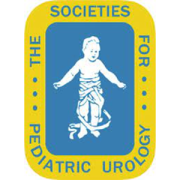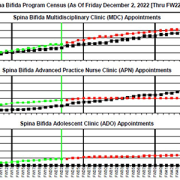Predicting surgery risk through single diuretic renogram

In a new study published in the Journal of Pediatric Urology, Aaron Krill, M.D., urologist at Children’s National Hospital and leading author, shows that halftime from a single initial diuretic renogram in children with antenatally detected UPJO is predictive not only of worsening future drainage, but also of future surgical repair (pyeloplasty).
The findings of a new study show promising results that will help to further subdivide the indeterminate drainage range and will help practitioners identify those children at increased risk for worsening drainage and future surgery.
So far, we know that spontaneous resolution of antenatally detected kidney obstruction, also known as ureteropelvic junction obstruction (UPJO), is relatively common. However, it can take several years and require frequent surveillance ultrasounds and diuretic renograms before patients reach a clinical outcome.
The study, which published in the Journal of Pediatric Urology, and was led by Aaron Krill, M.D., urologist at Children’s National Hospital, shows that halftime (T1/2) from a single initial diuretic renogram in children with antenatally detected UPJ obstruction is predictive not only of worsening future drainage, but also of future surgical repair (pyeloplasty).
“Among infants with UPJO, 52 to 79% can be expected to undergo spontaneous improvement,” Dr. Krill said.
Initial nonoperative management has become the standard of care for cases with indeterminate drainage patterns with preserved differential renal function (DRF). Diuretic renography has traditionally been the gold standard for diagnosis and surveillance of this condition. Identification of patients with very good drainage who can safely be discharged and those with very poor drainage who require early surgical repair has never been difficult. However, patients with indeterminate drainage have posed a unique diagnostic and therapeutic problem. Previously published ranges for indeterminate drainage were either too wide or too narrow to be clinically useful.
In the study, recent data shows a five-year surgery-free survival probability for patients with t1/2 of 5-20, 21-40 and 41-60 minutes to be: 79.7%, 46.7% and 33.3%. This suggests that patients with t1/2 of more than 21 minutes are at moderate to high risk of requiring surgery within the first five years of life while those with t1/2 20 minutes or less are at relatively low risk.
“This would allow us to concentrate our efforts appropriately on those who are at high risk of progressing to surgery and minimize the burden of testing and that of radiation exposure for children who are at low risk and likely to improve spontaneously,” Dr. Krill added.
Researchers identified patients younger than 18 months at presentation with unilateral, isolated moderate to severe hydronephrosis who underwent diuresis renography from 2000-2016. This group was sub-divided into three T1/2 intervals: 5-20, 21-40 and 41-60 minutes. Endpoints were pyeloplasty and pyeloplasty free survival. Indications for surgery were loss of DRF, worsening T1/2, family preference and/or pain.
“Being told that your newborn has an obstructed kidney and may require surgery in the future is typically a very stressful event for families,” Dr. Krill said. “Now after only a single diuretic renogram, we can provide families with accurate probability estimates of their child’s lifetime risk of surgery and risk of surgery within their first five years. This should allow us to appropriately set expectations and customize our surveillance routine for each patient.”
For decades, Children’s National has been working to refine and standardize diuretic renography. Some accomplishments over the years include establishing the safety of the test in infants, verifying its diagnostic utility, identifying new drainage parameters, and coupling it with machine learning to improve accuracy. This most recent manuscript capitalizes on a large database spanning 20 years of the team’s clinical experience to further improve the ability to predict who will need surgical repair and better counsel our patients.
Other authors include Briony K. Varda, M.D., M.P.H., Nicholas A. Freidberg, Md Sohel Rana, M.B.B.S., M.P.H., Eglal Shalaby-Rana, M.D., Bruce M. Sprague and Hans G. Pohl, M.D.











